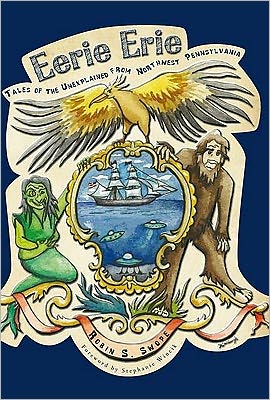She took her time going down the stairs, carefully taking each step and swaying her hips seductively for effect.
But she had to be careful not to sway too much down the long staircase for she had the symbol held out before her outstretched arms. And the symbol was almost important as who she represented in this ancient celebration of spring, for held out before her was the egg from heaven that had fallen into the Euphrates and pushed to the shores by the fish,which had given birth to the goddess.
Ishtar.
The Babylonian goddess of fertility, love and sex. The queen of heaven.
It is she that the young woman portrays as she slowly descends the Ziggarut with the symbol of her divine birth in her hands. And her descent down the stairs ended the 40 days of weeping for her son Tammuz, who had been slain by a wild pig, and began the festival in her name in which the whole country celebrated the wondrous resurrection of Ishtar’s son through the divine power of the egg of life.
When the young priestess of Ishtar completed her descent the crowd gave up a wild cheer of abandonment and started the festival in the queen of heaven’s name. They would venerate the egg and other fertility symbols, feast on wild pig and with the assistance of the temple priestess and the temple prostitutes abandon themselves in an orgy to commemorate life and resurrection.
Sound familiar?
Ishtar. Easter.
Well except for the temple prostitute part and the wild orgy.
The Easter Holiday we celebrate is an ancient and old one.
We get the word from this most sacred of Christian Holy days from the ancient pagan celebration of Vernal Equinox, or the spring solstice. The fertility festival of Ishtar.
Almost universally celebrated among primitive cultures the spring solstice was chiefly a celebration of fertility. After the cold dead of winter the ground once again opened its nurturing womb for the seed that would eventually sustain life, birds and other animals began the mating process. It was a time of life after seemingly unending death, the death of winter.
If you do a search through the Internet about the origin of Easter, many sites will have you assume that the tradition has arisen within the Christian Era. The modern word Easter came from the Old English word ?astre or ?ostre or Eoaster which originates within the first century A.D. This is the name of the Anglo-Saxon pagan goddess ?ostre the goddess of the dawn who also had a celebration during the Vernal Equinox which also incorporated fertility symbols such as the egg and the hare.
But the Easter tradition goes farther back than the time of Christ, it even pre-dates much of the Old Testament. The symbolic imagery of the Babylonian cult of the fertility and Ishtar, their queen of heaven echoes back far into pre-history. Some of the first religious idols we find primitive man fashioning is that of a mother goddess who is endowed with supernatural sexual power to help the procreation of those who revere it.
We 21st century humans are used to controlling our surroundings. But even we with all our marvelous modern marvels are still bound by the forces of life and death. And to primitive man the dual Equinox both literally and symbolically portrayed the power of life and death over our human condition. But whereas in the Autumnal Equinox man has no power over the death of the earth that encroaches upon him, he can participate in the spring by rebirth by reveling in his own fertility. I think that in essence is why these symbols have lasted so long.
They are empowering.
We have no control over death.
But we can participate in life.
And through the multitude of generations that have passed since the high priestess has last walked down the Ziggurat’s stairs in ancient Babylon, mankind is still the same. We abhor death. It is a constant reminder of our own mortality. But we have power in life. And every spring we can celebrate it.
It would seem that Easter is just a continuation of an age old festival, a festival of new life. It is easy to say that Christianity in its infancy adopted this pagan holiday and its similar theme of rebirth and fashioned a synthesis of ideas from antithetical ideology.
But I see it a bit different.
With Christmas we have a similar problem, for Christmas takes many pagan symbols turns them into Christian ones. But the one problem for Christmas is that even though we celebrate December 25th as the birth date for Christ, most scholars say He was born either in late summer or fall.
But the time of Jesus death and His resurrection is not one of conjecture.
Jesus was crucified and died over the Pesach, the Jewish Passover. And He was resurrected three days later. There is no ambiguity over the time frame according to the scriptural records.
So in my world view the resurrection of Jesus and our celebration of Easter is miraculous in a multifaceted way. Not just for its Theological significance in New Testament Theology. But in that God used the imagery that was already there, in a time celebrated since the first twinkling of man’s intellectual assessment of the relation of himself and his universe. God used this ancient ceremony to show a deeper truth and to reach out to mankind in love and hope.
God met mankind where he was.
Just as today, no matter how desperate the hour for us personally, God meets us where we are. He stands along side us, acknowledges our desires and needs, and gives us hope.
And no matter what you call the time, Easter is above all, a time of hope.










8 comments:
awesomeness. thanks.
Interesting post however, it does draw from some error of the internet and otherwise. From what I have come to understand, there was no goddess "Easter" - this was an error on the part of the historian Venerable Bede, having no independent existence outside of conjecture. Moreover though, pagan symbols where not "converted" to Christian use, Christianity was superadded to existing customs that mainly were not in themselves pagan but based on cycles in nature and the cosmos. Paganism did not invent them just as later Christian belief did not convert them. My two denarii into the morass of internet religiousity: the Christ is a physical and natural phenomenon as well as spiritual and His Resurrection, recorded historically as much as able in it's time was, like everything natural, in season.
Happy Easter all.
Godspeed, Pastor.
Very absorbing post, as usual, Pastor. On a completely unrelated topic, I've always wondered where you get those lovely paintings you use as mastheads. Happy Easter!
Thanks for the comment Anonymous,
However most of the history of Ishtar/Easter comes from Seminary. My Biblical studies focused on the Old testament and customs, especially the Pentatuech. Most of the research comes from Dr. Brian Widbin,an old professor of mine who is a University of Chicago Grad who's focus of study was ancient Mesopotamian Religion and the Akkidian language. He was also my Hebrew instructor and gave me the worst grade I ever earned in higher learning, darn it!
Also converted and superadded is just symantics is it not?
Thanks Eibhear,
I make the artwork myself with photoshop. A little extra work but I like the challenge!
Good job, Robin.
Well, Swope, the problem is just that you speak English. See http://cantuar.blogspot.com/2010/04/does-word-easter-have-pagan-origins.html.
Perhaps soon you'll discover that "God" comes from a word German pagans used to describe the demons they worshiped! It doesn't come from the Greek New Testament or the Hebrew Old Testament! How shocking! We should separate ourselves from those thinly disguised pagans who say they love "God"!
Crap on a stick, I never even noticed the Ishtar/Easter similarity. Also note that therefore the goddess Astarte and then probably the demon Astaroth are connected in a similar linguistic fashion. I think Astaroth was derived from Astarte (who was basically a version of Ishtar in another Middle Eastern mythology)... not sure.
You may have come across it, but as far as I know the celebration of Christmas on December 25 is the product of the Roman Empire. The Cult of Mithras, which was very prominent among the Roman military, also had one of the dead and resurrected gods like the early Tammuz, Osiris, etc. I believe December 25 was actually the date on which the cult celebrated Mithras' birth.
Post a Comment